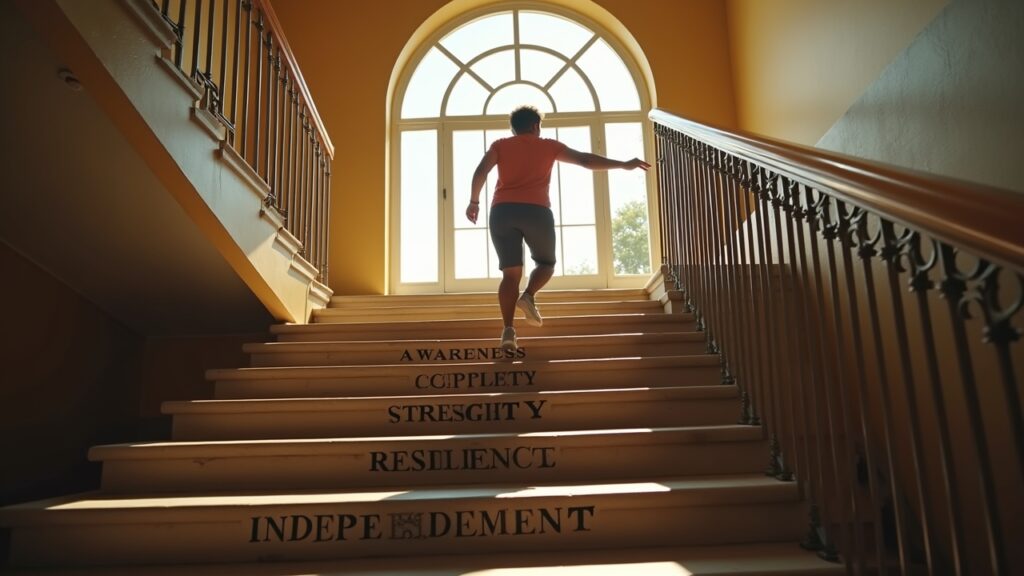Advertisements
Honestly, when I first heard my loans were in default, I literally threw up in my office bathroom. Yeah, not my proudest moment! But here’s the thing – over 7 million Americans have defaulted federal student loans, so if you’re reading this with that sick feeling in your stomach, you’re definitely not alone.
Moreover, I’m gonna share exactly how I fixed this mess through student loan rehabilitation. Trust me, it wasn’t as scary as I thought it’d be.
What Even Is Student Loan Rehabilitation?

So basically, rehabilitation is like a second chance program for defaulted federal loans. When you make 9 voluntary, on-time payments within 10 months, your loan gets pulled outta default status. Furthermore, the default notation gets removed from your credit report – which was huge for me since my credit score had tanked to like 480.
Actually, I didn’t even know this option existed until a coworker mentioned it during lunch. Before that, I was just ignoring the problem and hoping it would magically disappear. Spoiler alert: it doesn’t work that way!
The Day Everything Changed
Consequently, after months of dodging calls, I finally picked up the phone. The collection agency rep – her name was Maria – was surprisingly nice. However, she did explain that my wages could be garnished up to 15% if I didn’t take action soon.
That scared me straight. Additionally, I learned they could even take my tax refunds!
So we worked out a payment plan based on my income. Since I was broke as a joke back then, my rehabilitation payment was only $5 a month. Yes, five dollars! Although it sounds too good to be true, the Federal Student Aid website confirms these income-driven payments can be as low as $5.
My 9-Month Rehabilitation Timeline
Therefore, here’s exactly what happened during my rehabilitation period:
- Month 1-2: Made my tiny payments on time. Still getting collection calls though, which was annoying.
- Month 3: Finally set up autopay because I almost forgot one payment. Don’t be like me!
- Month 4-5: Nothing much happened. Just kept paying.
- Month 6: Got a letter confirming I was halfway done. That felt good!
- Month 7-8: Started researching repayment plans for after rehabilitation.
- Month 9: Made my final payment and waited anxiously.
Subsequently, about 30 days after my last payment, I got the official letter saying my loans were outta default. Furthermore, my credit score jumped like 100 points within two months!
Mistakes I Made (So You Don’t Have To)
Nevertheless, I screwed up a few things along the way. First off, I didn’t realize the collection fees (around 18% of my balance) would be added to my loan. That was a nasty surprise.
Also, I shoulda negotiated my payment amount better. Later I found out you can actually request a “reasonable and affordable” payment review if the calculated amount is too high. Moreover, some folks get their payments reduced even lower than mine was.
Oh, and here’s a big one – I didn’t know you can only rehabilitate a loan once. So if you default again after rehabilitation, you’re stuck with fewer options. Consequently, I made damn sure to pick a sustainable repayment plan afterwards.
Life After Rehabilitation
So what happens next? Well, your loan gets transferred to a regular loan servicer. Mine went to FedLoan Servicing, though they’re not around anymore.
Additionally, you gotta pick a new repayment plan quick. I went with income-driven repayment because, honestly, I still wasn’t making much money. But at least the collection calls stopped, and I could finally answer my phone without anxiety!
Furthermore, getting outta default meant I could go back to school. Yeah, you can’t get financial aid when you’re in default – learned that the hard way when I tried to take some classes.
Other Options Besides Rehabilitation
Actually, rehabilitation isn’t your only choice. There’s also loan consolidation, which is faster but doesn’t remove the default from your credit report. Plus, you can sometimes settle for less than you owe, though that’s got tax consequences.
However, for most people, rehabilitation makes the most sense. Especially if you care about your credit score. Mine eventually climbed back up to the 700s!
If you’re unsure which route to take, the National Foundation for Credit Counseling offers free advice. They helped me understand all my options without trying to sell me anything.
Your Next Move Forward

Listen, I know default feels like the end of the world. But rehabilitation gave me a fresh start when I needed it most. Moreover, it taught me to face financial problems head-on instead of hiding.
Therefore, if your loans are in default, pick up that phone today. Seriously, the relief you’ll feel after that first call is worth it. Remember, millions of us have been there, and rehabilitation is specifically designed to help you bounce back.
Additionally, once you’re back on track, make sure to explore all your repayment options. Don’t just pick the standard plan if it’s gonna stretch your budget too thin.
Finally, if you found this helpful, check out other financial recovery stories and tips at The Clear Cents. We’ve all made money mistakes – what matters is learning from ’em and moving forward!




[…] and financial guidance at Clear Cents. We’re all about helping regular folks navigate tricky financial situations without the confusing […]